|
ATI Radeon HD 4770
AMD/ATI have released an interesting
addition to the graphic card market with the ATI Radeon HD 4770
that offers powerful graphical capabilities at a cost effective price
range. Definitely created to challenge and potential beat the NVidia
GeForce 9800 GT, this graphic card boasts the following specifications;
Number of transistors - 826 million
Stream Processing Units - 640
Clock speed - 750
Memory Clock - 3200 MHz GDDR5
Math processing rate (Multiply Add) - 960 GigaFLOPS
Texture Units - 32
Render back-ends - 16
Memory - 512MB GDDR5
Memory interface - 128-bit
Fabrication process - 40nm
Power Consumption (peak) - ~80W
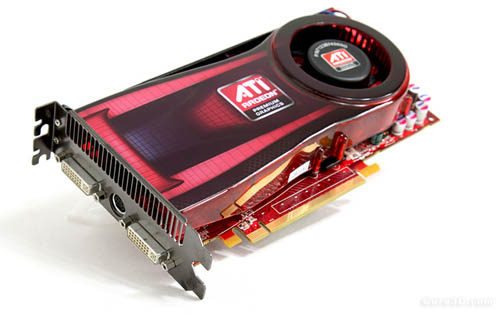
From the specifications, the card is quite
powerful and although won't allow for high-end gaming with full detail
and resolution, it is still a powerhouse when compared to medium gaming
and for the price range, it's definitely a contender for those on a
budget. The physical design of the card is quite reminiscent of those
high end AMD/ATI cards and best of all, the card supports dual-link DVI
that allows for the use of two screens.
From the card comparisons below from AMD,
the HD 7440 is definitely no slouch when it comes with power and
features, even for a 128-bit card that is definitely on par with the HD
4830.
| |
ATI Radeon
HD 4850 |
ATI Radeon
HD 4830 |
ATI Radeon
HD 4770 |
ATI Radeon
HD 3870 |
|
# of transistors |
956 million |
956 million |
826 million |
666
million |
|
Stream Processing Units |
800 |
640 |
640 |
320 |
|
Clock speed |
625 MHz |
575 MHz |
750 |
775+
MHz |
|
Memory Clock |
2000 MHz GDDR3 (effective) |
1800 MHz GDDR3 (effective) |
3200
MHz
GDDR5
(effective) |
2.25
GHz GDDR3 (effective) |
|
Math processing rate (Multiply
Add) |
1000 GigaFLOPS |
740 GigaFLOPS |
960
GigaFLOPS |
497+
GigaFLOPS |
|
Texture Units |
40 |
32 |
32 |
16 |
|
Render back-ends |
16 |
16 |
16 |
8 |
|
Memory |
512MB GDDR3 |
512MB GDDR3 |
512MB
GDDR5 |
512MB
GDDR3/4 |
|
Memory interface |
256-bit |
256-bit |
128-bit |
256-bit |
|
Fabrication process |
55nm |
55nm |
40nm |
55nm |
|
Power Consumption (peak) |
~110W |
~110W |
~80W |
~105W |
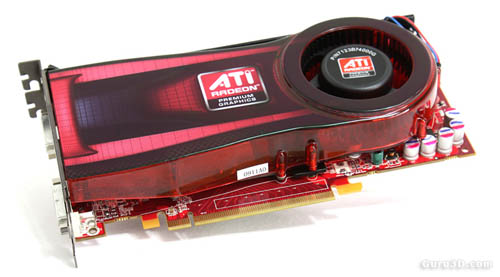
The installation card was a breeze and it
simply plugged into our PCi Express 8x/16x slot, connected the 6-pin
power plug and lastly connected the monitor to the back of the card.
Once installed into the system, Microsoft Windows Vista Ultimate Edition
(64-bit) automatically detected card, however we used the official
drivers and the latest version of DirectX to test this card.
System Specifications
For this review, we used the following system specifications to assist
with our testing and benchmarking. Be warned though that testing and
benchmarking is quite subjective due to the numerous types of hardware
available.
Motherboard - Gigabyte
GA-MA790GP-DS4G
Graphics Card - HD 7770
Memory - 2048MB (2 x 1024MB) DDR2 CAS4 1066Hz Dominator Corsair
Hard Drive - Seagate Constellation 500GB
Power Supply - Titan 850W ATX Intel AMD PC
Case Power Supply
Operating System - Microsoft Windows Vista Ultimate Edition
(64-bit) with SP
DirectX - 10
Using the card with the operating system,
surfing the net or accessing office products, the images were
exceptionally clear with vibrant colours. Watching DVD's and more
specifically Blu-rays displayed amazing picture quality with deep black
levels and a vivid colour palette on our BENQ screen.
The card also supports CrossFireX which
means you can link other cards together in order to increase your
graphical processing power. For example, connecting two cards of the
same calibre doubles the GPU power available to programs, especially for
games.
The temperate of the card is around the
midrange of gaming cards that runs at around 220 degrees Celsius (yes it
is hot, however that is what the fans and heatsinks are) with an
acceptable idle temperate of 150.
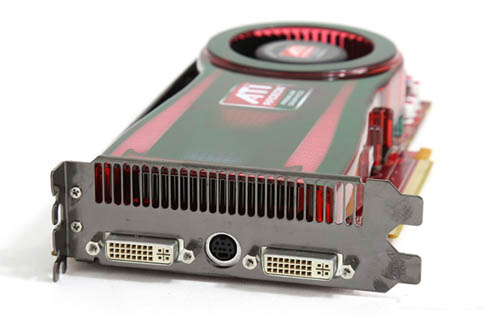
Benchmarking
Far Cry 2
Far Cry 2 was the first game off the bat to
test and for the uninitiated, the game is a next generation first person
shooter from UbiSoft that boasts some of the most realistic graphics to
date. The scores for Far Cry 2 were as follows;
1280x1024 - 61 Frames Per Second
1600x1200 - 51 Frames Per Second
1920x1200 - 50 Frames Per Second
The HD 4770 performed exceptionally well
with Far Cry 2, especially when linked with the Dragon Platform that
produced extremely impressive results for such a graphical intensive
game. Speaking of graphical intensive games, Crysis Warhead was the next
title to test.
Crysis Warhead
In Crysis Warhead, players will don the
Nanosuit of Sergeant Sykes and once again take on both aliens and
super-powered humans as the gamer attempts to save the world from yet
again another hideous danger. With state of the art graphics, Crysis was
one of those games that could not be successfully run on even the most
powerful computers around the world. Thankfully, Crysis Warhead was
reprogrammed to make it more user friendly for us humble mortals.
1280x1024 - 51 Frames Per Second
1600x1200 - 35 Frames Per Second
1920x1200 - 30 Frames Per Second
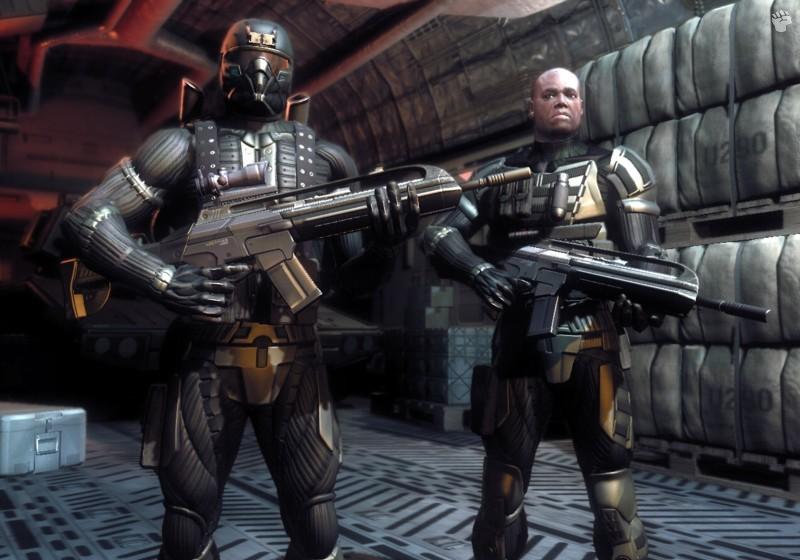
As you can see, Crysis Warhead had some
very impressive results and just to assist, a first person shooter game
should be aiming at around 30 frames per second, anything less and the
game will noticeable be quite jerky. Of course, higher is far superior
and running it at 1280x1024 was very impressive.
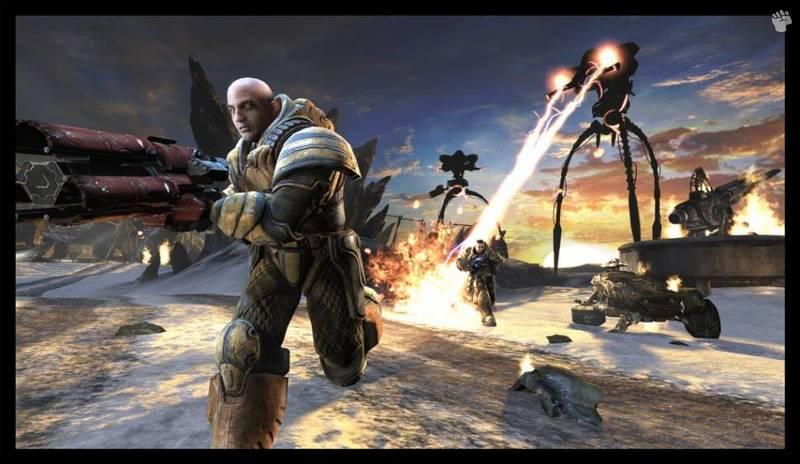
Unreal Tournament
Unreal Tournament 3 saw the return of one
of the world's most popular first person shooters for lovers of
multiplayer and the technology of this game is still one of the best
available which simply looks lush with the detail turned up and the
resolution.
1280x1024 - 72 Frames Per Second
1600x1200 - 56 Frames Per Second
1920x1200 - 39 Frames Per Second
As you can see, the game is quite playable
on all resolutions, although some tweaking is required to keep the frame
rate stable.
F.E.A.R
The last game we tested was F.E.A.R., an
older game that stands for First Encounter Assault and Recon which had
the player fighting supernatural menaces with the assistance of bullet
time and state of the art weaponry. It was good to see the card produce
some impressive frames per second.
1280x1024 - 105 Frames Per Second
1600x1200 - 81 Frames Per Second
1920x1200 - 57 Frames Per Second
In conclusion, AMD/ATI have created a truly impressive card that is
great for modern gaming that has decent power consumption features and
additional grunt if needed. We did try to overclock the card, however
only gained a slight performance improvement of around 10 - 15% with
basic tweaking, however the option may be there.
When you are surfing the net or using
office based software packages, you cannot even hear the card, however
when you do start to play, the fan speed will increase, although
noticeable, you will soon forget about the sound when your playing those
latest games for your PC.
At the end of the day, The ATI Radeon HD
4770 is an extremely affordable 128-bit card with the majority of bells
and whistles of the high-end cards that we could happily recommend to
gamers on a budget, especially with this economic uncertainty.
|